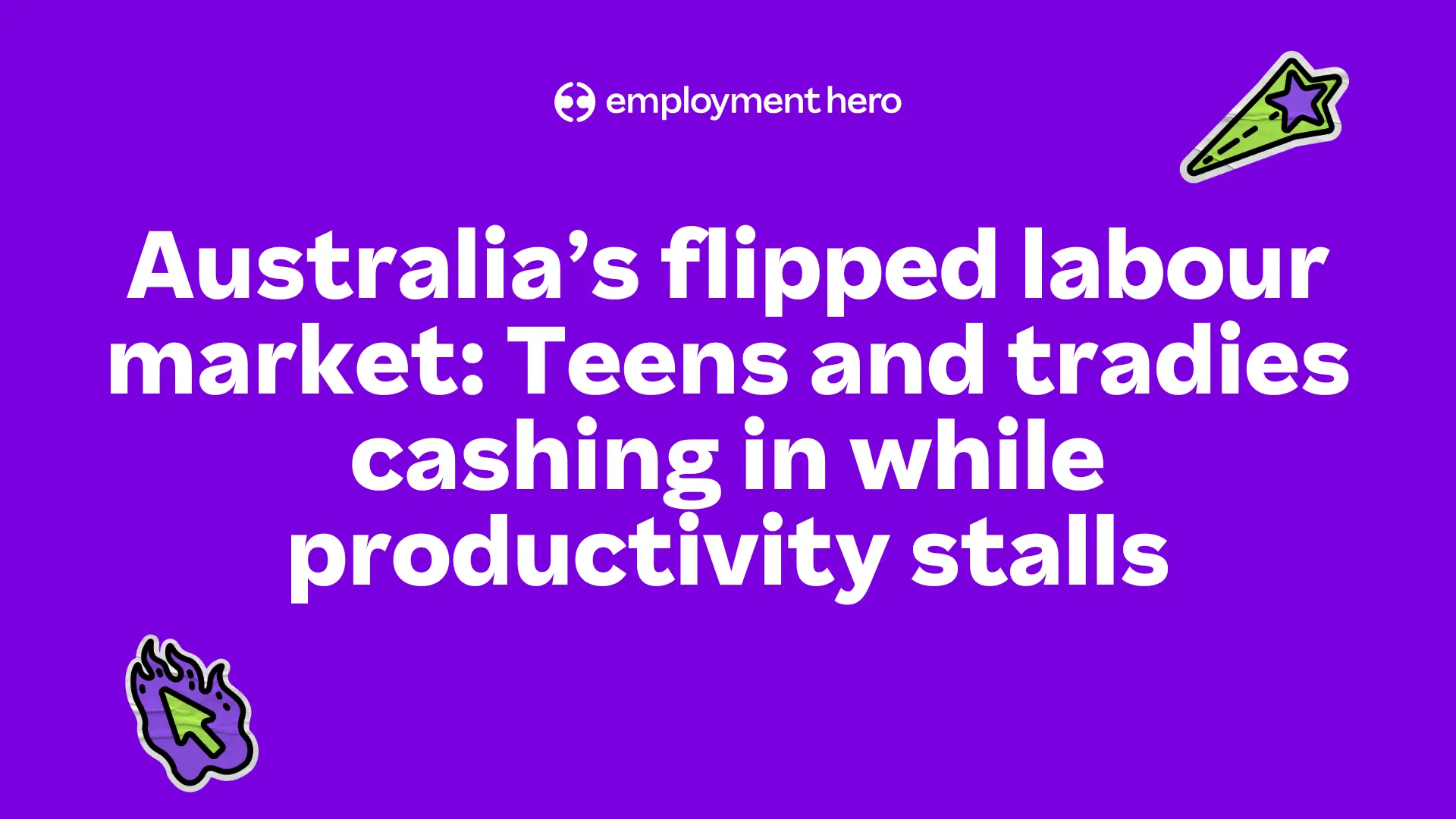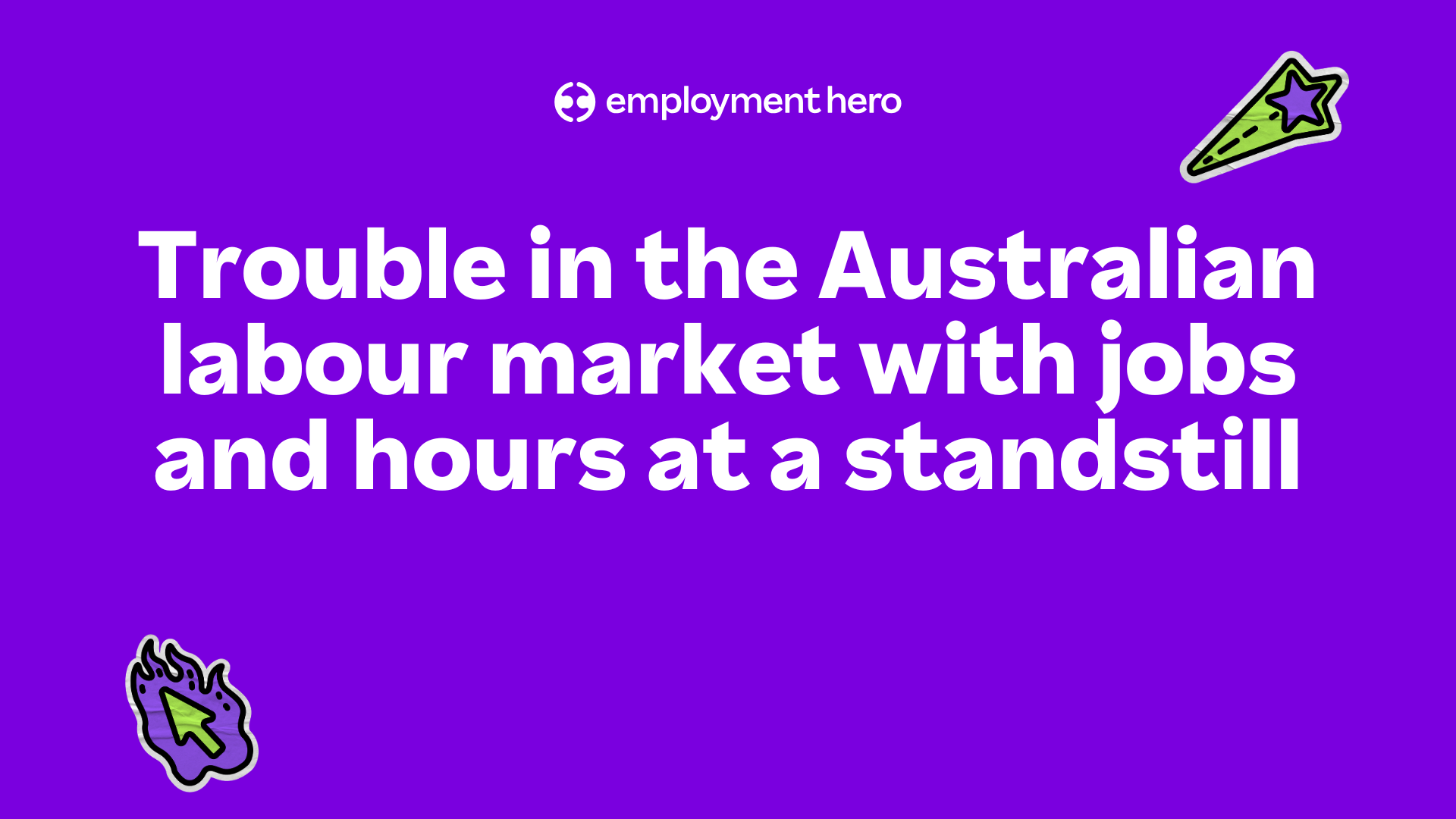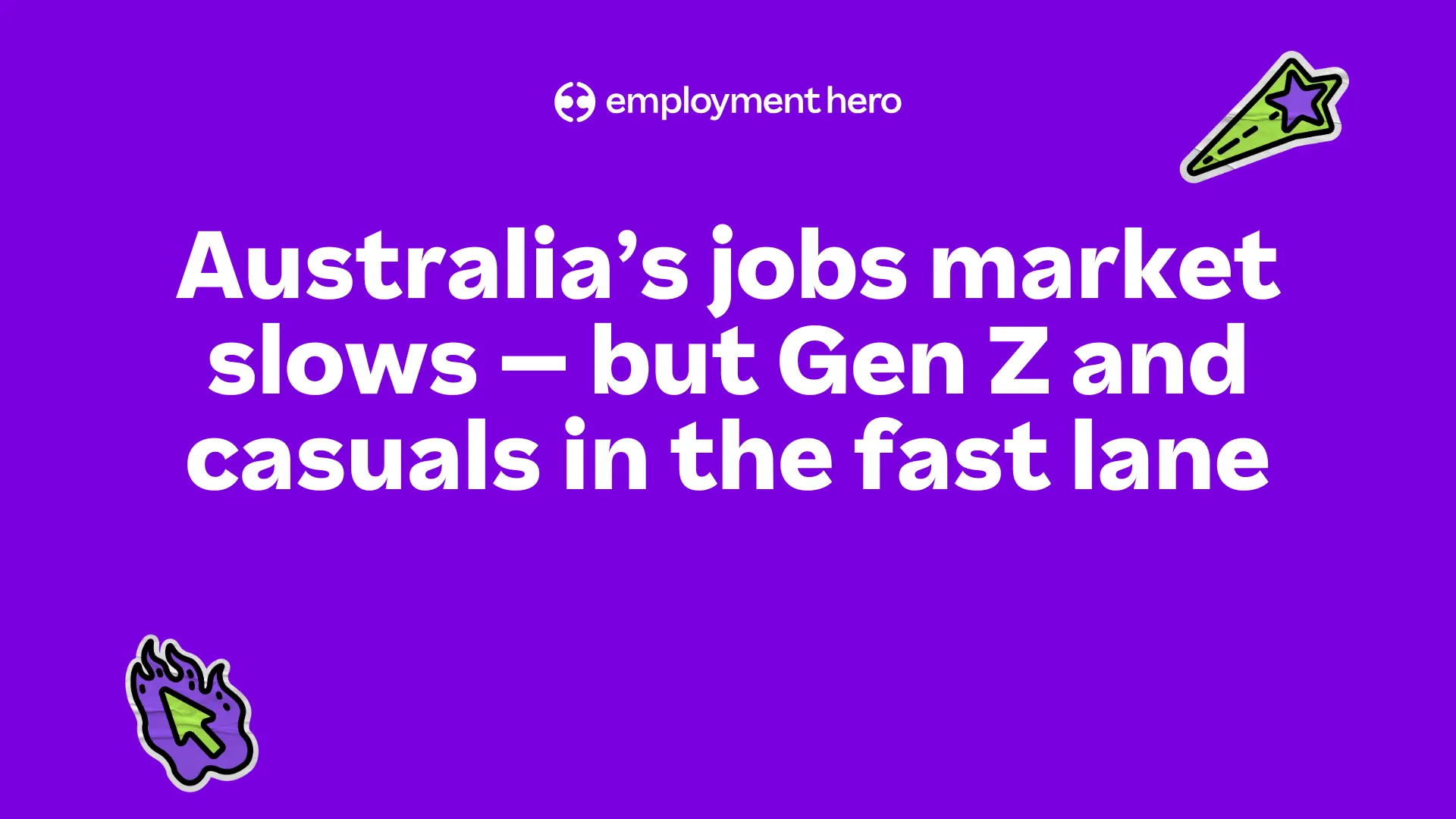Understanding Psychosocial Hazards

Contents
Workplace safety is no longer just hard hats and high-vis vests. A new frontier of health and safety has taken centre stage and it’s important that all employers are aware of their obligations.
Creating a safe workplace goes far beyond preventing slips, trips and falls. While physical safety is critical, a growing area of concern for employers is the management of psychosocial hazards. That is, factors in the work environment that can cause psychological or physical harm.
For too long, these risks have been misunderstood or ignored, but they have a huge impact on your team’s wellbeing and your business’s bottom line.
With recent amendments to Australia’s Work Health and Safety (WHS) laws, it means you now have a legal duty to manage psychosocial hazards in the workplace.
This article breaks down everything you need to know about psychosocial safety, as well as practical steps you can take to identify, manage and eliminate risks.

What are psychosocial hazards in the workplace?
Psychosocial hazards are aspects of work design, management and the social environment that can cause psychological harm or contribute to physical injury. Unlike a wet floor or faulty equipment, these risks are often invisible, stemming from how work is organised and how people interact. They can affect anyone in any industry.
The key difference between physical and psychosocial risks is their nature. A physical hazard might be a chemical spill or an unguarded machine. These are an immediate, tangible threat. Psychosocial hazards, on the other hand, build up over time. They include issues like excessive pressure, workplace conflict or a lack of support, all of which erode an employee’s mental and physical health.
In simple terms, these are work-related stressors that can negatively affect an employee’s mental health.
When employees are exposed to these hazards frequently, for a long duration or at a high intensity, it can lead to a stress response. Prolonged stress can cause psychological injuries like anxiety, depression and post-traumatic stress disorder (PTSD).
What are the most common types of psychosocial hazards?
Psychosocial hazards can appear in many forms. Recognising them is the first step toward managing them. Some of the most common psychosocial hazards include:
| Psychosocial hazard | Description |
| High and low job demands | This includes having too much or too little to do, working under sustained high pressure or having tasks that require intense concentration. |
| Low job control | Employees who have little say over how they do their work, the pace of their work or the resources they use can experience significant stress. |
| Poor support | This refers to inadequate support from supervisors, managers or colleagues, as well as insufficient training and resources. |
| Lack of role clarity | When employees are unsure of their job responsibilities, expectations or objectives, it creates confusion and anxiety. |
| Poor organisational change management | Ineffective communication and lack of support during periods of significant change, like restructuring or new technology implementation, can be a major hazard. |
| Inadequate reward and recognition | A lack of acknowledgment for effort and achievements can leave employees feeling undervalued and demotivated. |
| Poor organisational justice | This involves unfairness or inconsistency in workplace decisions, policies and procedures, leading to feelings of mistrust. |
| Traumatic events | Exposure to distressing events, such as workplace accidents, violence or dealing with traumatic material, can have severe psychological impacts. |
| Remote or isolated work | Working alone or in remote locations can lead to feelings of isolation and a lack of immediate support. |
| Poor physical environment | An unsafe, uncomfortable or poorly equipped physical workspace can contribute to stress and psychological harm. |
| Workplace conflict | Ongoing, unresolved conflict or poor relationships between colleagues, managers and employees. |
| Bullying and harassment | Repeated and unreasonable behaviour directed towards an employee or a group of employees. This includes sexual harassment. |
| Violence and aggression | Any incident where an employee is abused, threatened or assaulted in circumstances relating to their work. |
How can psychosocial hazards cause harm?
The impact of psychosocial hazards extends far beyond just “feeling stressed.” Prolonged exposure can lead to serious health problems, affecting both individuals and the organisation as a whole.
For employees, these risks can manifest as:
- Mental health conditions: Anxiety, depression and burnout are common outcomes.
- Physical health issues: Chronic stress is linked to heart disease, digestive problems and a weakened immune system.
- Reduced job satisfaction: Employees who feel unsupported or overwhelmed are less likely to be engaged or motivated.
For the business, the consequences are equally severe:
- Decreased productivity: Stressed and unwell employees are less focused and efficient.
- Increased absenteeism and presenteeism: More sick days and employees who are physically present but mentally checked out.
- Higher staff turnover: A toxic or high-pressure environment drives talented people away, increasing recruitment costs.
- Negative workplace culture: Unmanaged psychosocial hazards can poison team dynamics and damage morale across the organisation.
What’s the impact when psychosocial hazards overlap?
Psychosocial hazards rarely exist in isolation. More often, they overlap and interact, creating a compounding effect that dramatically increases the risk of harm. For example, an employee dealing with high job demands might feel manageable if they have strong support from their manager. But if that same employee also experiences poor support and lack of role clarity, the situation becomes far more dangerous.
Consider an employee with an unmanageable workload who is also being bullied by a colleague. The high workload drains their resilience, making them more vulnerable to the psychological harm caused by the bullying. The bullying, in turn, makes it harder to focus on work, amplifying the stress from their job demands. This downward spiral is where the most severe harm occurs. Managing psychosocial risks requires looking at the whole picture, not just isolated incidents.
What legal duties do employers have to manage psychosocial risks?
As an employer in Australia, you have a clear legal duty to protect your workers from psychological harm, as well as physical harm.
The law has recently shifted to make managing psychosocial risks a clear and enforceable duty for employers. Under Work Health and Safety (WHS) laws, Persons Conducting a Business or Undertaking (PCBUs) have a primary duty of care to ensure the health and safety of their workers, so far as is reasonably practicable. This duty explicitly includes psychological health.
Safe Work Australia’s model Code of Practice provides detailed guidance on these obligations. Failure to comply can result in significant penalties. Regulators are actively enforcing these duties, making proactive management essential for compliance. This means that having a robust Workplace Health and Safety policy is a legal necessity.
In 2022, the model WHS Regulations were amended to include specific duties for managing psychosocial risks. These updates have now been adopted across most jurisdictions. Even in states yet to implement the model changes, the expectation remains the same. Employers must identify and manage risks to mental health with the same diligence as any other workplace hazard.
This positive duty means you can’t be reactive. You must actively identify, assess and control psychosocial risks. That includes recognising factors like high job demands, poor support, bullying and low role clarity, and taking steps to eliminate or minimise them. Employers must also maintain and review these controls regularly and consult with workers about any changes.sier with honest, open feedback from your team. Invite input and be ready to make tough calls.

A practical 4-step risk management process for identifying psychosocial hazards
Managing psychosocial hazards doesn’t require reinventing the wheel. You can apply the same systematic risk management process you use for physical hazards. This four-step approach, recommended by Safe Work Australia, provides a clear framework for action. Crucially, this process must involve consultation with your workers at every stage.

Step 1: Identify hazards
You can’t manage what you don’t know exists. The first step is to proactively identify potential psychosocial hazards in your workplace. This is a discovery phase and requires open communication and careful observation.
Here’s how you can do it:
Talk to your team
Engage in open and honest conversations. Ask them about their work, what causes them stress, and what could be improved. One-on-one meetings, team discussions and informal check-ins are all valuable.
Use surveys
Anonymous surveys can be a powerful tool for gathering honest feedback. They allow employees to voice concerns without fear of repercussion.
Observe workplace interactions
Pay attention to how your team members interact. Are relationships respectful? Is communication effective? Are there signs of conflict or tension?
Review your data
Look at records such as incident reports, employee turnover rates, absenteeism and workers’ compensation claims. Patterns in this data can point to underlying hazards.
Inspect the physical environment
Assess the workspace for factors like noise levels, lighting, temperature and ergonomics that could contribute to stress.
Step 2: Assess the risks
Once you’ve identified the hazards, you need to assess the level of risk they pose. This involves considering the likelihood of the hazard causing harm and the potential severity of that harm.
When assessing risks, consider:
- How many people are exposed?
- How often are they exposed?
- How long are they exposed for?
- How severe could the psychological or physical harm be?
- Do any hazards interact to create a greater risk?
Some risks will be obvious, while others may require a more formal assessment process involving your HR team, WHS representatives and your employees. Be thorough and consider the unique aspects of different roles and departments within your business.
Step 3: Control the risks
Your primary duty is to eliminate risks. Where elimination isn’t possible, you must minimise them. This is where you implement control measures. The “hierarchy of controls” is a useful model for prioritising your actions, from most effective to least effective.
- Elimination: The most effective control is to remove the hazard completely. For example, if excessive workload is the hazard, you might redesign jobs or hire additional staff to eliminate the unreasonable demands.
- Substitution: Replace the hazard with something safer. This could involve changing work processes or materials.
- Isolation: Separate people from the hazard. For remote workers, this could mean creating opportunities for social connection to combat isolation.
- Engineering controls: Change the physical environment or equipment. This might include improving lighting, introducing noise-cancelling technology or redesigning workstations.
- Administrative controls: These are changes to work practices, policies and procedures. Examples include:
- Developing clear policies on bullying and harassment.
- Implementing fair and transparent performance management systems.
- Providing training on conflict resolution and stress management.
- Ensuring role clarity with detailed job descriptions.
- Personal Protective Equipment (PPE): This is the least effective control and is generally more applicable to physical hazards. For psychosocial hazards, think of it as providing individual support, which can be part of a broader strategy.
Often, a combination of these controls will be the most effective approach.
Step 4: Review your control measures
Managing psychosocial risk is an ongoing process, not a one-time task. You need to continually monitor and review your control measures to ensure they are working effectively and to adapt to any changes in your workplace.
Schedule regular reviews and ask yourself:
- Are the control measures working as intended?
- Have the control measures introduced any new hazards?
- Have there been any changes in the workplace that might affect the risks?
- Are you consulting with your workers and their representatives?
This cycle of identifying, assessing, controlling and reviewing creates a system of continuous improvement, helping you build and maintain a psychologically safe workplace.
What strategies help manage and minimise psychosocial risks?
Once hazards are identified, you must implement control measures to manage them. Managing psychosocial risks is an ongoing process of improvement, not a one-time fix.
We’ve outlined some focus areas, along with practical actions you can consider to help manage psychosocial risks.
| Focus area | Practical actions |
| Improve work design | Make sure workloads are reasonable and deadlines are achievable. Provide employees with autonomy and control over their work where possible. Offer flexible work arrangements supported by a clear flexible working policy. |
| Enhance role clarity | Develop clear job descriptions and organisational charts. Make sure employees understand their responsibilities, objectives and reporting lines. |
| Provide training for leaders | Equip managers with the skills to recognise signs of distress, provide support and foster positive team dynamics. Encourage regular check-ins and open conversations about wellbeing. |
| Foster a supportive culture | Encourage open communication, collaboration and teamwork. Implement policies that promote respect and fairness, such as a grievance handling policy or anti-bullying policy. |
| Offer mental health support | Provide access to wellbeing resources, including an Employee Assistance Program (EAP) offering confidential counselling and support for personal or work-related issues. |
| Use integrated employee management tools | Adopt platforms like Employment Hero to centralise policy management, track employee engagement data and communicate effectively with your team |
How can employers build a mentally healthy workplace?
Compliance is the baseline, not the goal. To truly thrive, businesses must go beyond their legal duties and actively cultivate a culture of psychological safety. This means creating an environment where employees feel safe to speak up, take risks and be themselves without fear of negative consequences.
Building a mentally healthy workplace involves:
- Leadership commitment: Leaders must champion mental health and model healthy behaviours.
- Clear policies: Develop and promote a comprehensive workplace policy framework that covers everything from anti-bullying to conflict resolution. Our Workplace Conflict Management Guide can help.
- Open communication: Regularly talk about mental health to reduce stigma and encourage help-seeking.
- Investing in team dynamics: Proactively work on building high-performance teams where trust and collaboration are the norm. Our guide on Building High Performance Teams offers valuable insights.

Psychosocial hazards vs psychological safety – what’s the difference?
It’s easy to confuse these two concepts, but they are distinct.
Psychosocial hazards are the risks. The aspects of work that can cause psychological harm. Think of them as the potential threats you need to identify and control.
Psychological safety is the outcome. The belief that you won’t be punished or humiliated for speaking up with ideas, questions, concerns or mistakes. It’s the feeling of security that allows teams to perform at their best. Want to learn more? Download our guide on psychological safety.
Managing psychosocial hazards is about removing the negatives. Building psychological safety is about creating the positives. One is about risk mitigation and compliance, the other is about creating a culture of high performance and innovation.
The tools you need to build a culture of psychological safety at work
Even with strong risk management and compliance processes, employees may still experience personal or work-related challenges that impact their mental health. This is where an Employee Assistance Program (EAP) becomes invaluable.
Employment Hero’s EAP provides confidential, employer-funded access to professional counselling and wellbeing support for employees and their immediate families, helping them manage issues such as stress, anxiety, financial pressures or relationship challenges. By offering this service, you create a clear, stigma-free pathway for employees to seek help early, demonstrating a genuine commitment to their wellbeing and reinforcing your duty of care under WHS obligations.
Our Employment Operating System goes beyond EAP support with a full suite of tools to promote workplace health, safety and psychological wellbeing. Our survey tools can help you identify emerging psychosocial risks such as low engagement or poor workload balance.
Features like one-on-ones, recognition and shout outs, empower leaders to foster open communication, regular feedback and genuine connection, which are all essential to building psychological safety at work. And when combined with our WHS compliance reminders, policy management tools and reporting features, you have a complete platform to support your team’s wellbeing, strengthen your culture and meet your legal obligations.
Ready to strengthen your team’s wellbeing and business compliance? Book a demo today and see how Employment Hero can help you build a psychologically safe, high-performing workplace.
Disclaimer: The information in this article is current as at November 2025, and has been prepared by Employment Hero Pty Ltd (ABN 11 160 047 709) and its related bodies corporate (Employment Hero). The views expressed in this article are general information only, are provided in good faith to assist employers and their employees, and should not be relied on as professional advice. The Information is based on data supplied by third parties. While such data is believed to be accurate, it has not been independently verified and no warranties are given that it is complete, accurate, up to date or fit for the purpose for which it is required. Employment Hero does not accept responsibility for any inaccuracy in such data and is not liable for any loss or damages arising either directly or indirectly as a result of reliance on, use of or inability to use any information provided in this article. You should undertake your own research and to seek professional advice before making any decisions or relying on the information in this article.
Related Resources
-
 Read more: Australia’s flipped labour market: Teens and tradies cashing in while productivity stalls
Read more: Australia’s flipped labour market: Teens and tradies cashing in while productivity stallsAustralia’s flipped labour market: Teens and tradies cashing in while productivity stalls
Australia’s flipped labour market sees teens and tradies cash in. Wages are surging for youth and construction, but falling hours…
-
 Read more: Trouble in the Australian labour market with jobs and hours at a standstill
Read more: Trouble in the Australian labour market with jobs and hours at a standstillTrouble in the Australian labour market with jobs and hours at a standstill
Employment Hero June Jobs Report reveals abysmal growth. Jobs and hours remain flat month-on-month, signaling a stalled recovery despite recent…
-
 Read more: Australia’s jobs market slows – but Gen Z and casuals in the fast lane
Read more: Australia’s jobs market slows – but Gen Z and casuals in the fast laneAustralia’s jobs market slows – but Gen Z and casuals in the fast lane
Australia’s job market slows but Gen Z surges. Casual jobs jumped 10.1% and teen hiring rose 27% as employers shift…























